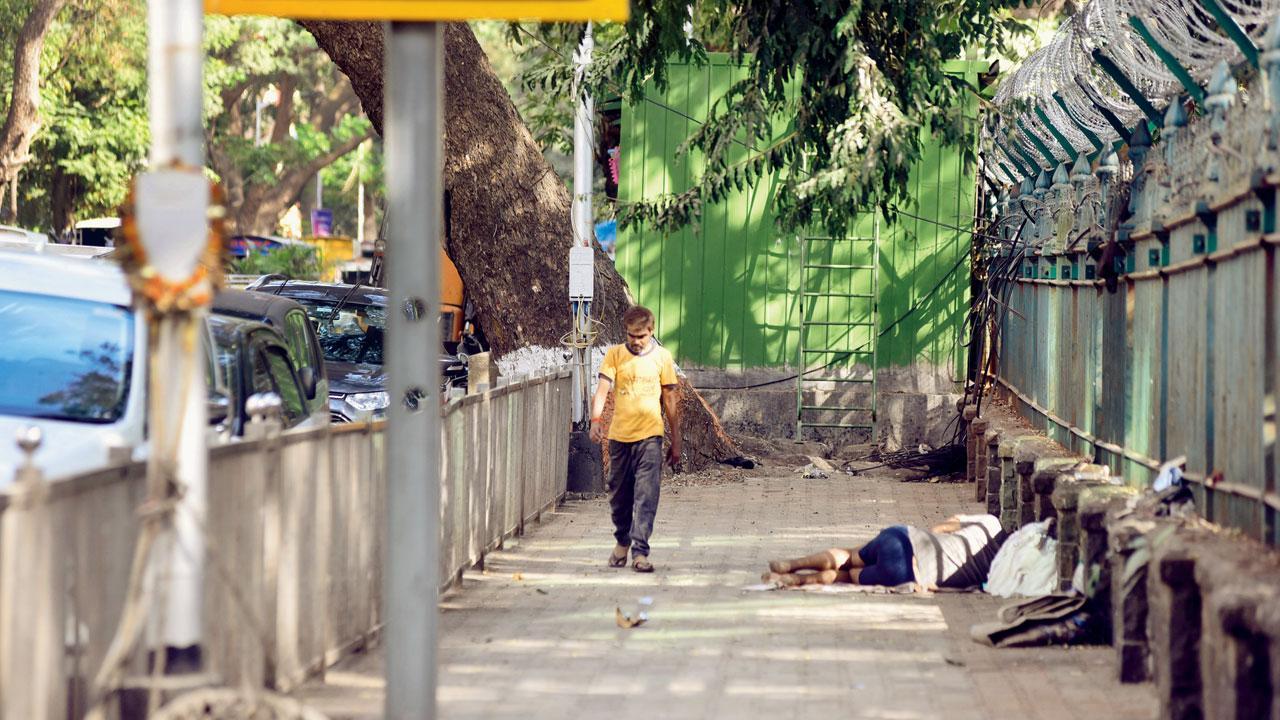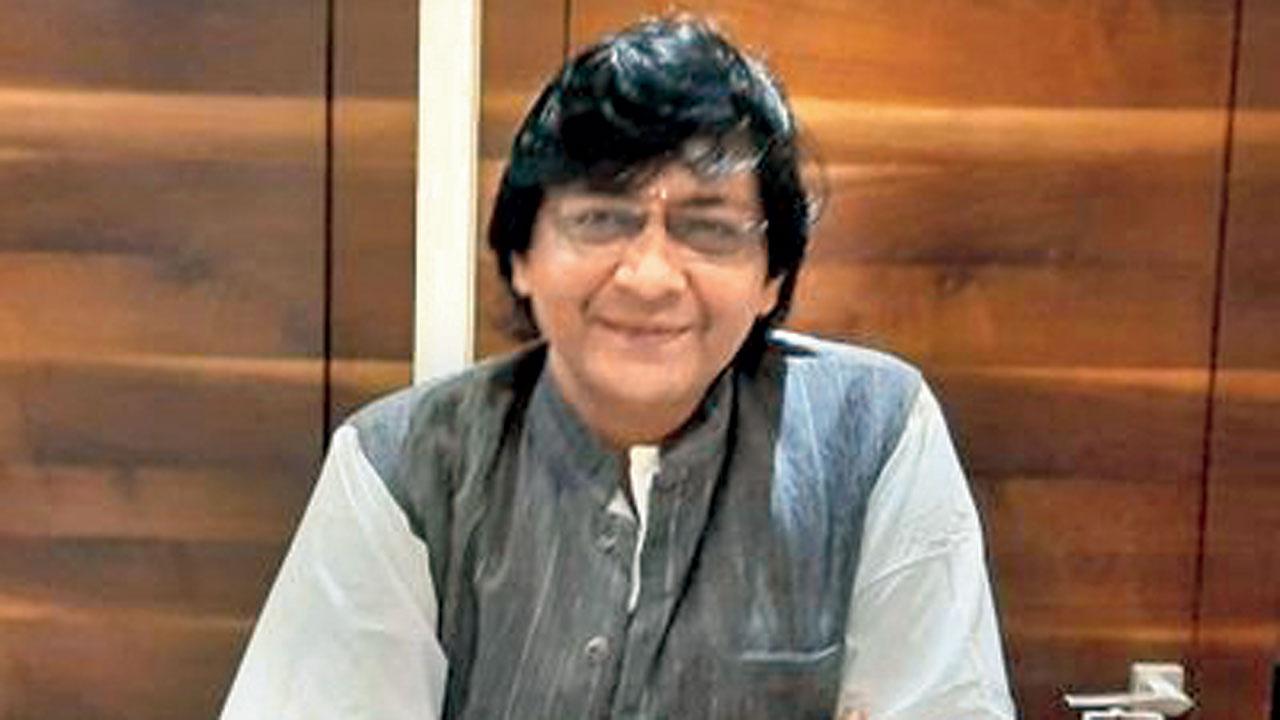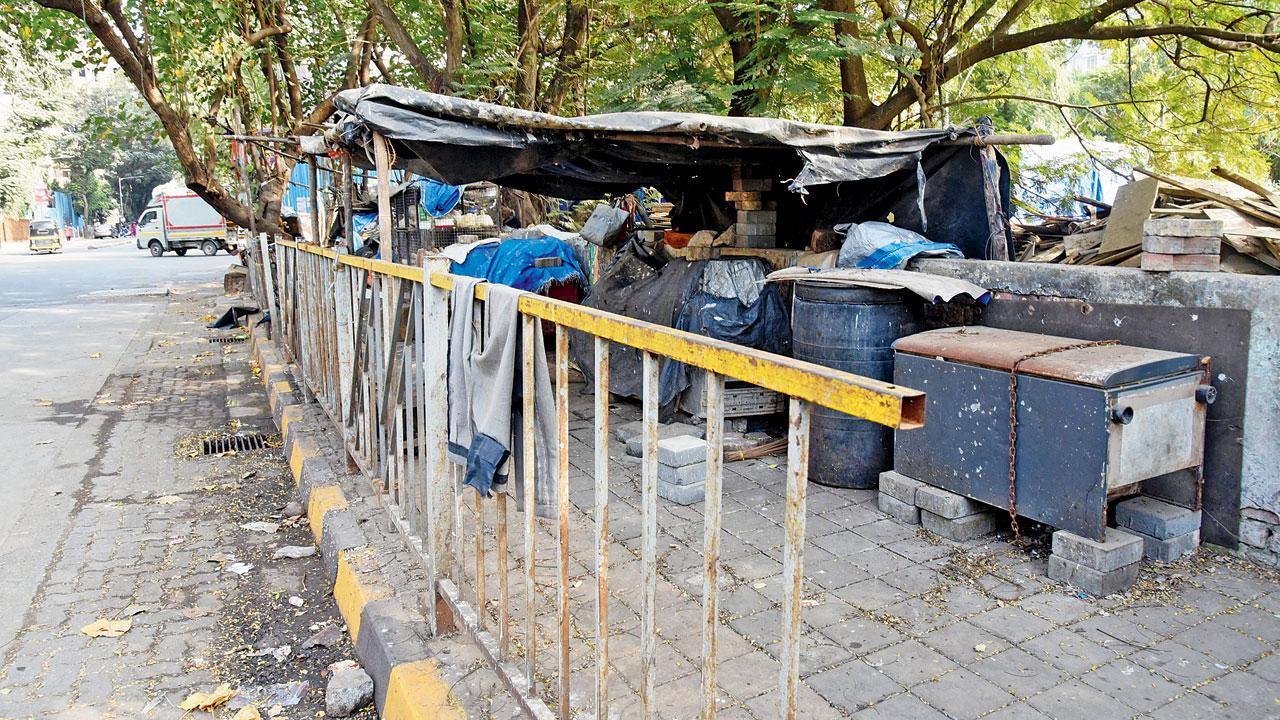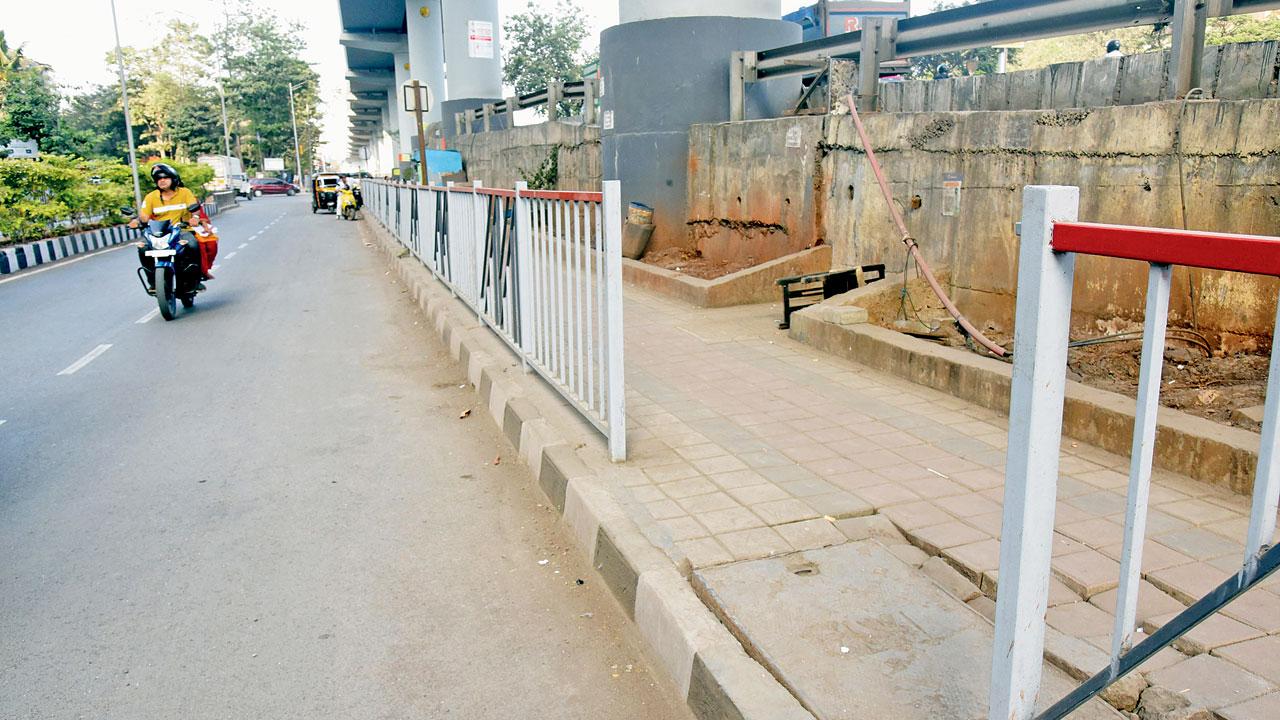In third and final part of our footpath railing series, mid-day talks to town planners and activists, about what went wrong and how to solve the problem

Railings along this Byculla footpath have created a dead-end. Pic/Shadab Khan
After assessing the poor installation of footpath railings in the city, mid-day, in the concluding part of the series, talked to town planners and activists about where the civic body went wrong and what could be done to ensure the guardrails make pavements accessible to pedestrians. Experts pointed out how no planning before installing the railings has led to the railings being a hindrance, rather than a help. A majority were also of the opinion that there was no need for railings everywhere in the city.
ADVERTISEMENT
Most of the areas in the western and eastern suburbs have footpath railings, but that was not the case with south Mumbai. When the Brihanmumbai Municipal Corporation’s roads department had proposed to install iron railings in the Fort area in 2019, the heritage committee opposed it. The panel had said that these railings “do not fit with the heritage ambience.”

Gopal Jhaveri, Mumbai March
Town planners and activists, however, said that the railings do not match the ambience in eastern and western suburbs too. They also pointed at the lack of uniformity of the barriers and cited that while some places have railings, others have bollards. The activists also said how the railings are different in different areas.
Lack of planning
Dhawal Ashar, a transportation planner and engineer and head of integrated transport and road safety at World Resources Institute India (WRI India), told mid-day that the railings, which were intended to protect pedestrians, have failed to fulfil the purpose. “They [railings] either deter pedestrians from accessing the footpath, and in many cases it can be more dangerous, especially at night. Future streets of Mumbai have to address three risks—safety and accessibility, flood and heat. Mumbai streets need to be designed to address these risks, and the railing, sadly, addresses neither of these. If anything, they are aggravating the first issue of safety and accessibility,” Ashar said.

As the railings have left no entry-exit point, pedestrians take to walking on the road in Byculla. Pic/Shadab Khan
Gopal Jhaveri from Mumbai March slammed the BMC for not planning the railings based on the condition of the road. He said that this oversight lead to mistakes as well as footpath deadends. “Officials are installing it anywhere and everywhere, without considering the width of the footpath. Mumbai does not have uniform-sized footpaths, hence if you install railings on narrow footpaths it will lead to congestion and unsafe corridors,” he said.
Also Read: Mumbai: Hawkers take over footpath guardrails meant for citizens
No aesthetics
Jhaveri told mid-day, “One of the technical issues with the railings is that these are very lightweight. There seems to be no coordination between the ones approved and the ones installed. But, the question is: how can the BMC approve such lightweight railings? Miscreants can easily break or cut these. I also feel that these may not survive Mumbai’s heavy monsoon if not installed properly, as these are hollow.”

A broken footpath railing on Brahma Vishnu Mahesh Marg, in Shimpoli. Pic/Sameer Markande
“The [old cast iron] railings installed during the pre-British period in south Mumbai were solid and of good quality, and they were also in sync with the heritage ambience of the area,” Jhaveri said, adding, “There is no sense of aesthetics now. For example, near Gowalia tank in south Mumbai, people hang their clothes on the railing. There is no synchronisation between the design of the railing and the ambience of the area.”
Not needed everywhere
Environmental activist Zoru Bhatena said, “A money-spending business is what it is. Why else would railings be needed on every footpath? Not all areas have the same problem. Some places might be crowded due to continuous pedestrian influx, some areas would have more heavy vehicles. But a majority of the places face encroachments either in the form of establishments, parking of vehicles or hawkers.

Railings installed near Hub Mall in Goregaon East. Pic/Sameer Markande
While station areas do need railings as people in large numbers come out at the same time, that is not the case with other areas. For instance, one will not see railings or bollards everywhere in south Mumbai.” He added, “I feel there are places that do not require railings, but the presence of the same is forcing people to come out and walk on the road.”
Need wider footpaths first
Sulakshana Mahajan, architect and urban planner, told mid-day, “The congestion, encroachment of footpaths and the difficulty that pedestrians have to face—all of these point to a total failure of the planning authority. Railings were installed to protect pedestrians from speeding vehicles and keep hawkers off sidewalks, among other reasons. Since footpaths are now much more crowded and hawkers have taken over stretches, people choose to walk on the road. Take the road outside CSMT station as an example. There are at least 10-15 times more people walking on the road as compared to vehicles. The planning authorities and public representatives should construct convenient and easy access pedestrian pathways instead of solely thinking of flyovers and skywalks.”

Dhawal Ashar, transportation planner and engineer and head of integrated transport and road safety at WRI India
“Installing railings haphazardly is not the answer to these issues. Putting some restrictions in place and doing systematic planning can help. The city’s footpaths ought to be wider and uniform throughout. While Mumbai cannot ban hawkers, which is both impractical and incorrect, the BMC must act quickly to remove encroachments from footpaths. The civic body needs to work toward the systematic relocation and rehabilitation of hawkers in appropriate locations. The authorities can also limit the number of cars and private vehicles, and promote increased use of public transportation. I suggest prohibiting private vehicles within 300 metres of railway stations to decongest these areas.”
BMC’s footpath railing policy
The civic body came out with ‘Pedestrian First Footpath Guidelines’ on June 30, 2014 which stated that railings needed to be installed along footpaths to avoid potential vehicle conflict.

Sulakshana Mahajan, architect and urban planner
The guidelines read, “The footpaths need to be distinctly segregated from the roads, where fast-moving vehicles ply.” While the railings were installed to keep pedestrians safe, the haphazard installation has made footpaths inaccessible at many places.
In addition, the railings, which were meant to deter hawkers, are now being used as hangers to display hawkers’ wares, thus increasing congestion on footpaths.
What can be done
>> Easy access pedestrian pathways
>> Wider and uniform footpaths
>> Quick action against encroachment
>> Limiting vehicular access to railway stations
>> Putting curbs on parking near busy roads and junctions
>> Promotion of public transport
*As suggested by architect and urban planner Sulakshana Mahajan
 Subscribe today by clicking the link and stay updated with the latest news!" Click here!
Subscribe today by clicking the link and stay updated with the latest news!" Click here!








